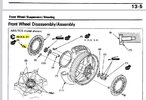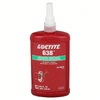Hello everyone!
New to the ST1100, owned for around a month. Needs new rotors and pads. I quickly learned Honda will pull your pants down for OEM parts as they are not common anymore.
I ordered new TRW items as they are what was available here for reasons I won't go into.
My shock and dismay and need for help is because I have not found any good sources for the procedure and installation torque specs. (Wheel off/on, pads out/in, discs off/on).. No Youtube Videos/DIY's/write up's and the Honda manual I downloaded seems to completely avoid the rotors, but details everything else.
I have done the job now just using common sense, but I have no torque specs for any of these critical parts. Can anyone help please? I don't want stuff coming loose. Axle nut, pinch bolts, caliper bolts, pad pins and plugs. Rotor attach bolts, etc.. All just 'nipped up' at the moment.
Many thanks
New to the ST1100, owned for around a month. Needs new rotors and pads. I quickly learned Honda will pull your pants down for OEM parts as they are not common anymore.
I ordered new TRW items as they are what was available here for reasons I won't go into.
My shock and dismay and need for help is because I have not found any good sources for the procedure and installation torque specs. (Wheel off/on, pads out/in, discs off/on).. No Youtube Videos/DIY's/write up's and the Honda manual I downloaded seems to completely avoid the rotors, but details everything else.
I have done the job now just using common sense, but I have no torque specs for any of these critical parts. Can anyone help please? I don't want stuff coming loose. Axle nut, pinch bolts, caliper bolts, pad pins and plugs. Rotor attach bolts, etc.. All just 'nipped up' at the moment.
Many thanks



